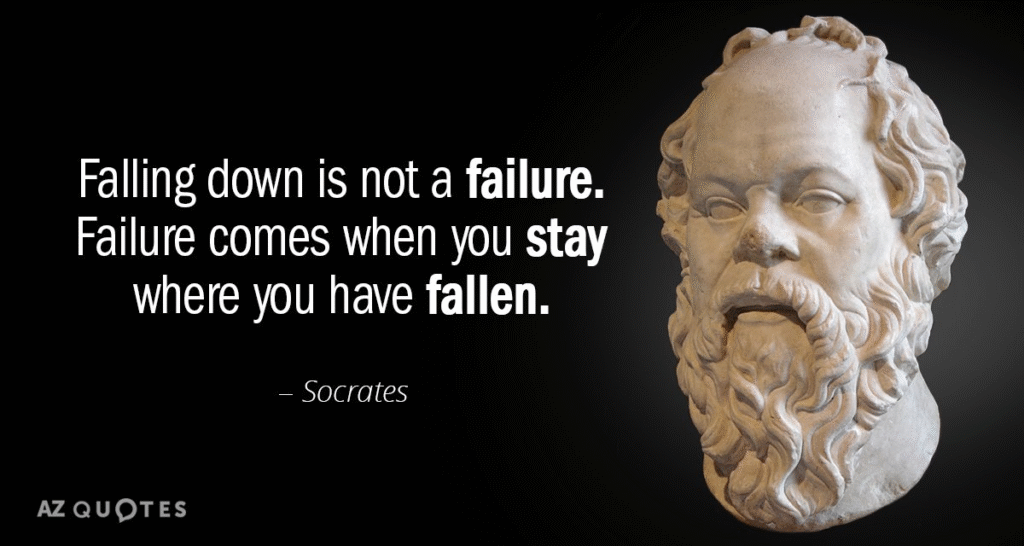
Leaders who embody a “never give up” attitude are often described as knowing the “art and science to bounce back” because their resilience isn’t just an innate trait, but a cultivated skill supported by both intuitive understanding and systematic application of principles.
Here’s a breakdown of why this phrase is used, the core competencies, and how frameworks establish winning practices:
Why “Leaders Know the Art & Science to Bounce Back”
- The Art: This refers to the intuitive, empathetic, and creative aspects of leadership. It’s about:
- Emotional Intelligence: Understanding and managing one’s own emotions, and recognizing the emotions of others. This allows leaders to navigate setbacks with self-awareness and inspire confidence in their team.
- Vision & Purpose: The ability to maintain a clear vision despite obstacles and connect the team’s efforts to a larger purpose. This provides intrinsic motivation during challenging times.
- Adaptability & Creativity: The capacity to think outside the box, find novel solutions, and pivot strategies when initial plans fail.
- Empathy & Communication: The skill to connect with team members, acknowledge difficulties, and communicate a path forward that resonates with everyone.
- The Science: This encompasses the systematic, analytical, and structured approaches leaders employ. It’s about:
- Problem-Solving Methodologies: Using frameworks like Root Cause Analysis, A3 Thinking, or Kepner-Tregoe to diagnose issues accurately and develop effective solutions.
- Data-Driven Decision Making: Relying on facts and metrics to assess situations, evaluate options, and measure progress.
- Strategic Planning: Employing structured approaches to set goals, allocate resources, and develop contingency plans.
- Process Improvement: Continuously analyzing and refining systems to enhance efficiency and effectiveness, reducing the likelihood of future setbacks.
- Learning & Feedback Loops: Implementing mechanisms for continuous learning, reflection, and incorporating feedback to improve future performance.
Together, the “art” provides the human touch, inspiration, and adaptability, while the “science” offers the rigor, structure, and analytical tools necessary for effective recovery and growth.
Core Competencies of Leaders with a “Never Give Up” Attitude
- Resilience & Grit: The fundamental ability to recover quickly from difficulties and show sustained passion and perseverance toward long-term goals, even in the face of adversity.
- Self-Awareness & Self-Regulation: Understanding their own strengths, weaknesses, emotional triggers, and biases. The ability to manage their impulses, maintain composure under pressure, and regulate their emotions effectively.
- Optimism & Positive Mindset: A belief in their ability to overcome challenges and a focus on opportunities rather than limitations, even when faced with setbacks.
- Learning Agility: The willingness and ability to learn from experience, adapt to new situations, and continuously develop new skills and perspectives. They view failures as learning opportunities.
- Problem-Solving & Critical Thinking: The capacity to analyze complex situations, identify root causes of problems, and develop effective, innovative solutions.
- Decisiveness & Action Orientation: The ability to make timely decisions, even with incomplete information, and translate those decisions into concrete actions. They don’t procrastinate or get stuck in analysis paralysis.
- Visionary & Strategic Thinking: The ability to see beyond immediate challenges, articulate a compelling future state, and develop a coherent plan to achieve it.
- Communication & Influence: The skill to clearly articulate their vision, motivate their team, and influence stakeholders to support their efforts, even during difficult times.
- Empathy & Team Empowerment: Understanding the challenges faced by their team members, providing support, and empowering them to take ownership and contribute to solutions.
- Accountability & Ownership: Taking responsibility for outcomes, both successes and failures, and fostering a culture of accountability within their team.
How this Attitude Enables Learning from the Past, Planning for the Future, and Taking Massive Actions:
- Learning from the Past:
- Post-Mortem Analysis (Retrospection): Leaders with this attitude don’t just move on; they meticulously analyze what went wrong. They encourage open discussions, identify contributing factors, and extract actionable insights. This prevents repeating mistakes.
- Growth Mindset: They view failures not as definitive endings, but as valuable data points for growth. They ask “What did we learn?” rather than “Who is to blame?”
- Continuous Feedback Loops: They actively seek and incorporate feedback from all levels to understand the full picture of past events.
- Planning the Future Well:
- Scenario Planning: Based on past learnings, they anticipate potential future challenges and develop multiple contingency plans.
- Strategic Foresight: They use historical data and current trends to identify emerging opportunities and threats, allowing for proactive rather than reactive planning.
- Clear Vision & Goals: Their resilience fuels a clear, unwavering vision for the future, which then informs well-defined, ambitious, yet realistic goals.
- Resource Optimization: Past experiences help them understand resource limitations and allocate them more effectively for future endeavors.
- Taking Massive Actions Right Now:
- Bias for Action: Having learned from the past and planned for the future, they possess an inherent drive to act. They understand that inaction is often the biggest impediment to progress.
- Calculated Risk-Taking: Their analysis of past events helps them assess risks more accurately, enabling them to take bold, but informed, actions.
- Relentless Execution: They instill a culture of execution, breaking down large goals into smaller, manageable steps and relentlessly pursuing them.
- Agility in Implementation: While they plan well, they also remain agile, ready to adjust their course as new information emerges or circumstances change.
Powerful Frameworks to Establish Winning Practices:
Here are some frameworks that leaders can incorporate to operationalize these competencies and establish winning practices:
- The Growth Mindset (Carol Dweck):
- Framework: Individuals with a growth mindset believe their abilities can be developed through dedication and hard work. They embrace challenges, persist in the face of setbacks, see effort as a path to mastery, learn from criticism, and find inspiration in the success of others.
- Application: Leaders cultivate this in themselves and their teams by praising effort and learning over just outcomes, reframing failures as learning opportunities, and promoting continuous skill development. This is foundational for bouncing back and continuous improvement.
- SWOT Analysis (Strengths, Weaknesses, Opportunities, Threats):
- Framework: A strategic planning tool used to evaluate an organization’s or individual’s competitive position.
- Application:
- Learn from Past: Identify internal weaknesses that contributed to past failures and external threats that materialized. Understand internal strengths that helped in previous recoveries and external opportunities that were missed.
- Plan Future: Leverage identified strengths and opportunities to set future goals. Develop strategies to mitigate weaknesses and threats.
- Massive Action: Prioritize actions that capitalize on strengths and opportunities, and address weaknesses and threats.
- Root Cause Analysis (RCA):
- Framework: A systematic process for identifying the underlying causes of problems or incidents, rather than just addressing the symptoms. Techniques include the “5 Whys” and Fishbone Diagrams.
- Application:
- Learn from Past: When a setback occurs, leaders use RCA to dig deep and understand why it happened. This goes beyond superficial explanations and uncovers systemic issues.
- Plan Future: Once root causes are identified, corrective and preventive actions can be designed to ensure the problem doesn’t recur, leading to more robust future plans.
- Massive Action: Implementing the identified corrective actions is a direct result of this analysis, driving immediate and impactful change.
- OKRs (Objectives and Key Results):
- Framework: A goal-setting framework for defining and tracking objectives and their outcomes. Objectives are ambitious, qualitative, and inspirational, while Key Results are measurable, specific, and time-bound.
- Application:
- Learn from Past: Reviewing past OKRs provides clear data on what was achieved and what wasn’t, highlighting areas for improvement and learning.
- Plan Future: OKRs compel leaders to think about ambitious future objectives and how success will be concretely measured, ensuring well-defined plans.
- Massive Action: The clear, measurable nature of KRs drives focused, massive actions toward achieving specific results. It creates accountability and momentum.
- Agile Methodologies (e.g., Scrum, Kanban):
- Framework: Iterative and incremental approaches to project management and development, emphasizing collaboration, flexibility, and rapid adaptation to change.
- Application:
- Learn from Past: Regular feedback loops (e.g., sprint retrospectives in Scrum) allow teams to reflect on what went well and what didn’t, continuously improving their processes.
- Plan Future: Agile encourages adaptive planning rather than rigid long-term plans. Plans are refined incrementally based on learning and changing circumstances.
- Massive Action: Short iterations (sprints) and continuous delivery encourage immediate action and rapid delivery of value, even in the face of evolving requirements or setbacks. It embodies the “bounce back” through continuous adjustment.
By weaving these competencies and frameworks into their leadership style, individuals can truly embody the “art and science to bounce back,” transforming setbacks into stepping stones for unprecedented growth and success.

Anupam Sharma
Psychotech Evangelist
Coach I Mentor I Trainer
Counselor I Consultant
